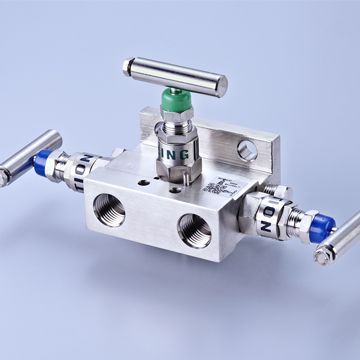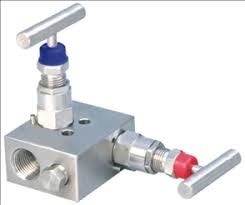Sep 25, 2025
Many people may confuse the concept of a 3 valve manifold. It is not a device for centralized control of pneumatic valves; on the contrary, it has a completely different purpose.
A 3 valve manifold is an integrated valve block designed for instrumentation. Although, structurally, it belongs to the category of valve manifolds just like valve islands, its function is entirely different—it is not used to drive cylinders but rather to protect and calibrate differential pressure transmitters.
This manifold integrates three valves: a high pressure block valve, a low pressure block valve, and an equalizing valve, and it is widely applied in the installation and maintenance of differential pressure measurement.

The 3 valve manifold consists of three manual valves dedicated to a differential pressure transmitter, each serving a specific function:
High Pressure Block Valve – connected to the high-pressure side of the transmitter
Low Pressure Block Valve – connected to the low-pressure side of the transmitter
Equalizing Valve – connects the high and low pressure chambers
Normal Measurement: Open the high-pressure and low-pressure valves, close the equalizing valve → the transmitter receives the true differential pressure.
Maintenance/Protection: Close the high-pressure and low-pressure valves, open the equalizing valve → balances both chambers and protects the transmitter.
Calibration: Close the process-side block valves, then use the equalizing valve or an external pressure source to calibrate the transmitter.
The one-piece design of the 3 valve manifold provides the convenience of centralized valve management, similar to a valve island with manifold block and multiple solenoid valves, while reducing fittings and potential leak points, thus ensuring reliable protection and calibration of the differential pressure transmitter.
The 3 valve manifold is used in industrial applications for process variable measurement and control.
◆ Pressure Measurement & Monitoring
◆ Level Measurement
◆ Flow Measurement
◆ Temperature Measurement
◆ Analytical Instrumentation
2-Valve Manifold
Structure: Includes one block (isolation) valve and one vent/test valve.
Function: The simplest design, offering only basic isolation and venting functions.
5-Valve Manifold
Structure: More complex than the 3-valve manifold. In addition to the high-pressure valve, low-pressure valve, and equalizing valve, it includes two extra vent/test valves.
Function: Provides the most complete functionality. On top of the 3-valve manifold features, it adds venting/purging and online calibration, making it suitable for complex applications.
Belonging to the same integrated manifold design concept, whether it is a 2-valve, 3-valve, 4-valve, or 5-valve manifold, their structures differ, and so does the level of complexity of the instrumentation applications they can support.
In contrast, terms such as “valve manifold for solenoid valves” or “pneumatic valve manifold” specifically refer to valve islands used for centralized management of actuators in pneumatic systems.
You May Interest In

Sep 25, 2025 Blog
What is a 2-valve manifold?Links: www.fescolo.com(Pneumatic)
FOKCA ©1998-2025 All Rights Reserved Sitemap